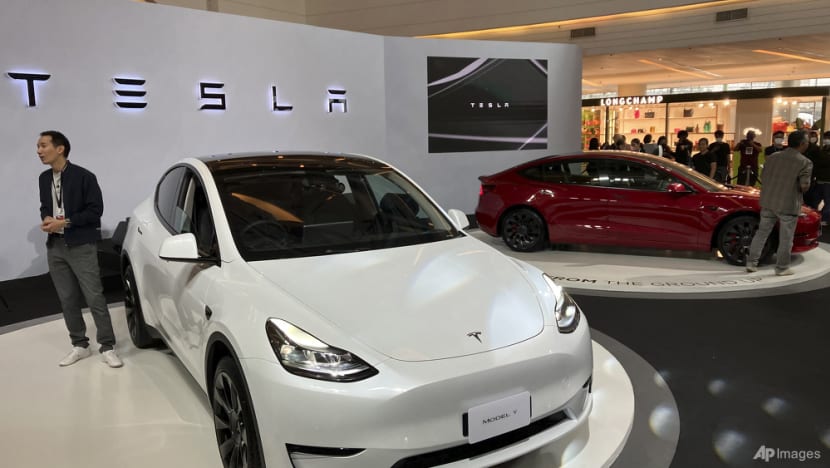Car makers racing to keep up with electric vehicle demand in the US
Electric vehicles have become the fastest accelerating segment in the American auto market, and a race is on for car makers to keep up with the demand.

NEW YORK: Rising gas prices, greater competition in the electric vehicle (EV) market and improving technology are driving the demand for battery-powered cars in the United States.
EVs have become the fastest accelerating segment in the country’s automobile market, and a race is on for car makers to keep up.
In the first nine months of this year, sales accelerated 70 per cent compared to the year before. More than 200,000 EVs were sold in the third quarter alone.
Mr Garrett Nelson, senior equity analyst at CFRA Research, said: “Charging times are improving, EV battery ranges are increasing. So it’s a very fluid situation but there’s been a lot of innovation, which is helping the EV market overall in really getting consumers more comfortable with the idea of buying an EV.”
EV MARKET COMPETITION
Tesla remains in pole position in the US market, accounting for more than 60 per cent of the country’s EV sales in the third quarter.
However, the gap is narrowing.
The Chevy Bolt, for instance, was the third most popular choice for consumers that quarter.
“It’s a no-nonsense, reliable electric vehicle that really is the first entry for a lot of people to move out of the gas-powered car into an electric car. And the reaction is that people are mostly surprised they don’t have to change their lifestyle,” said Chevrolet communications director Shad Balch.
Traditional US automakers are also facing competition from overseas.
Nearly a thousand of vehicles from Vietnamese electric car manufacturer VinFast have recently arrived from the Southeast Asian country. The brand now has 10 US showrooms, with more expected to open in the future.
EV sellers such as VinFast hope volatile gas prices seen in the US this year will persuade more people to make the switch.
“You don’t have to look at the gas price every day,” said Ms Van Anh Nguyen, chief executive officer of VinFast Manufacturing US. “Charging an EV at night, the electricity rate at night is usually the best, so it’s very reasonable and cheap to run an EV.”
Some states in the US are moving quickly to support the public’s move towards EVs.
California, for instance, has voted to ban the sale of gas-powered vehicles by 2035, while New York wants only zero-emission vehicles to be sold in the state by then.
EV INFRASTRUCTURE, MATERIALS NEEDED
Efforts are underway to build up the infrastructure needed to support EVs.
Currently, the US has an estimated 50,000 public charging units nationwide, with an aim to boost that to 500,000 by the end of the decade.
Back in August, the Biden administration passed the Inflation Reduction Act, which extends tax credits of up to US$7,500 for certain new EVs through 2032.
But the government will need to keep investing to keep up with growing EV sales, said analysts.
“Short-term challenge which we’ll absolutely solve is that we want more and more stations, so people feel they are nearby and it reduces consumer concerns with adoption,” said NYU Stern School of Business economics professor Joseph Foudy.
“Longer term, when all these cars are on the market, is going to be the overall stress on the electrical grid, so that’s an investment in increasing electrical generation capacity.”
Meanwhile, manufacturers globally are racing to source materials such as lithium needed for EV batteries.
As EV makers work to ramp up production, analysts warned that these supply chain issues could prove to be a bump in the road.
















